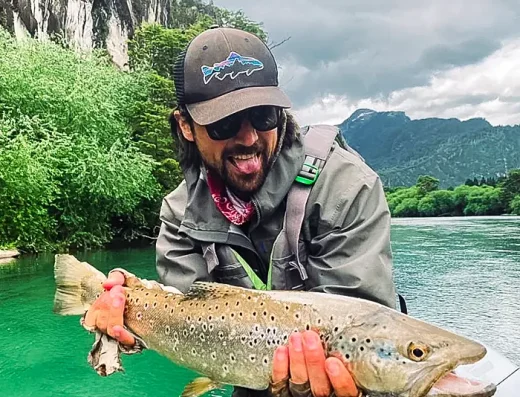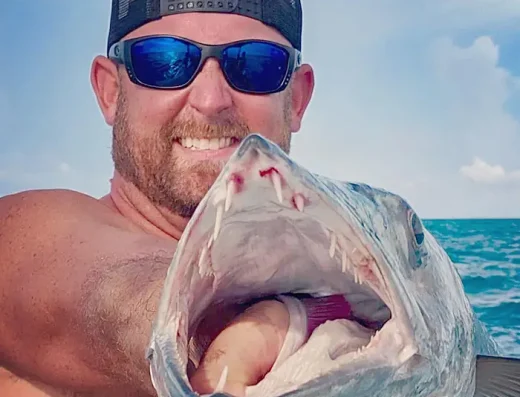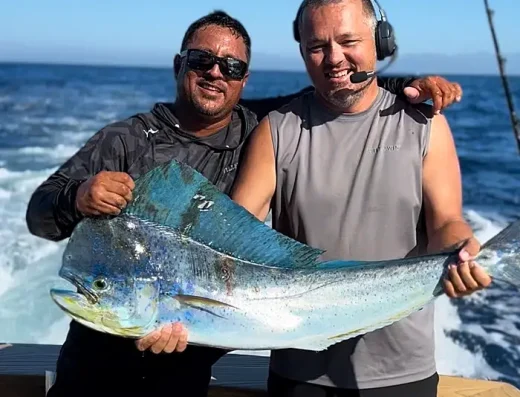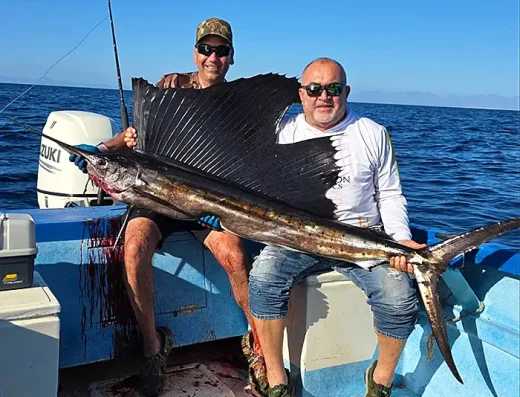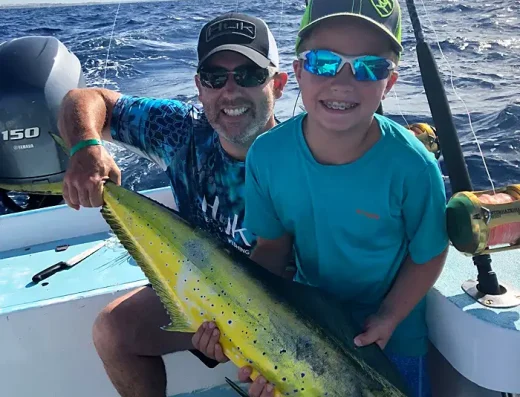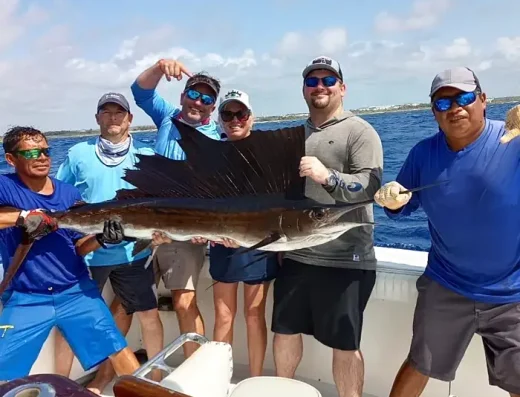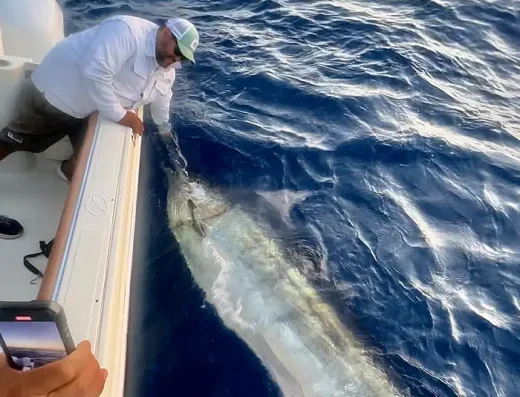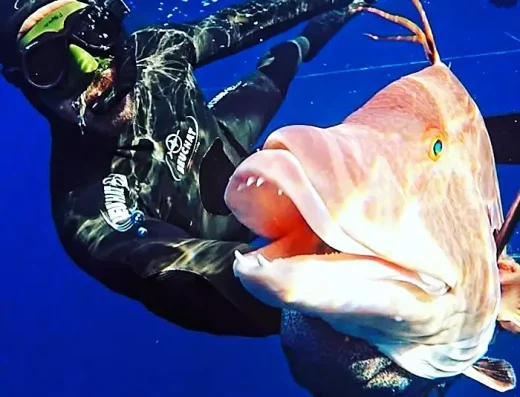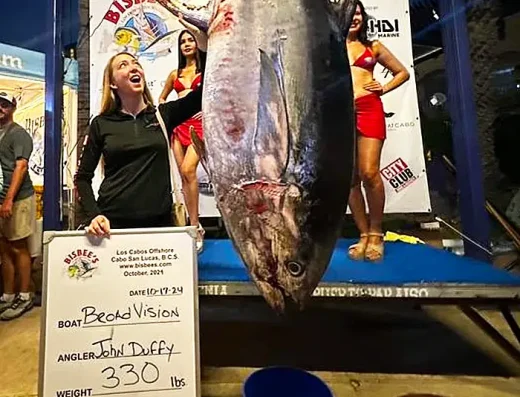Charter Fishing in Mexico
Mexico offers fishing across offshore Pacific waters, inshore coastal zones, Caribbean flats, and freshwater rivers and lakes.
TrustedFish connects anglers with proven local captains in Mexico —no commissions, no pay-to-play listings, no BS. Every charter on our platform is invite-only, vetted for skill, local knowledge, and reputation. If they’re listed, they’ve earned it.
Top Rated Charters in Mexico
Click to View Destinations
Mexico Fishing Guide
Mexico’s fishing is defined by its two major coastlines: the Pacific Ocean to the west and the Gulf of Mexico/Caribbean Sea to the east. The Pacific side, particularly Baja California, Mazatlán, and Puerto Vallarta, is renowned for billfish, tuna, dorado, and roosterfish. The Caribbean side, especially around Cancún, Cozumel, and Isla Mujeres, is famous for sailfish, marlin, dorado, and flats species like bonefish, tarpon, and permit. Inland, lakes such as Chapala and Cuchillo, as well as rivers across the country, host largemouth bass, catfish, and tilapia.
Seasonal bite patterns vary widely. On the Pacific coast, marlin and dorado peak in summer and fall, while yellowfin tuna are strong from late spring through fall. The Caribbean sees peak sailfish and white marlin runs in winter and spring, with tarpon and permit strongest in summer. Freshwater fishing is reliable year-round, with largemouth bass at their best in cooler months.
Charter fishing is highly developed on both coasts. Cabo San Lucas and Puerto Vallarta are global hubs for big game, with fleets of 25–40 ft sportfishers offering half-day, full-day, and multi-day trips. Cancún and Cozumel charters range from small center consoles for flats and reef fishing to large trolling boats for offshore pelagics. Freshwater bass fishing lodges are found inland, where guided trips focus on trophy fish in stocked reservoirs.
Techniques depend on the region. Offshore trolling with lures, rigged ballyhoo, and teasers dominates for marlin, sailfish, and tuna. Jigging and live baiting are common for yellowtail, snapper, and grouper along reefs. Inshore, casting plugs and poppers for roosterfish, snook, and jacks is popular. Fly fishing is well established on the Caribbean flats for tarpon, bonefish, and permit. Freshwater anglers use traditional bass tactics—plastics, crankbaits, and jigs—along with live bait. Mexico demands adaptability, with fishing options for nearly every style.
Fishing Seasons in Mexico
Spring
Spring kicks off strong offshore action in both oceans. On the Pacific, yellowfin tuna and striped marlin start biting, while in the Caribbean, sailfish and white marlin peak. Tarpon and permit are active in the flats, and largemouth bass fishing inland is excellent as waters warm. Trolling and fly fishing are both highly productive.
Summer
This is the prime season for Pacific marlin, dorado, and tuna, with Cabo and Puerto Vallarta leading the action. The Caribbean flats host peak tarpon and permit fishing, along with steady bonefish bites. Offshore Cancun sees blue marlin in good numbers. Freshwater bass remain strong early in the season before heat slows fishing in some lakes. Offshore trolling dominates summer.
Fall
Pelagic fishing continues strong in the Pacific, with marlin, sailfish, dorado, and tuna in full swing through October and November. The Caribbean sees steady tarpon and permit, while bonefish feed aggressively before cooler weather. Inland, bass fishing improves again as temperatures drop. Reef fishing for snapper and grouper is consistent in both oceans
Winter
Winter brings the best sailfish runs off Isla Mujeres and Cancun, drawing international anglers. Pacific fishing slows slightly, but striped marlin and yellowtail remain targets. Inshore, snook and jacks are reliable in both oceans. Freshwater fishing peaks for bass and catfish as cooler weather improves feeding. Techniques shift toward trolling offshore and bait fishing inshore.
Top Fishing Regions
Cabo San Lucas (Baja California Sur)
Mexico’s premier sportfishing destination, Cabo is known for blue and striped marlin, dorado, tuna, and wahoo. The Sea of Cortez meets the Pacific here, creating prime currents for pelagics. Charters run year-round, with summer and fall offering the heaviest action.
Puerto Vallarta (Jalisco)
Offshore fishing here is legendary, with giant yellowfin tuna, blue marlin, sailfish, and dorado common. El Banco and Corbeteña are world-class grounds. Inshore, roosterfish and snapper provide year-round action. Multi-day charters are popular due to the distance to offshore banks.
Mazatlán (Sinaloa)
Known as the “Billfish Capital of the World,” Mazatlán produces striped marlin, sailfish, and dorado. It also has strong bottom fishing for snapper and grouper. Both half-day and full-day trips are common, with reliable action most of the year.
Cancún & Isla Mujeres (Quintana Roo)
The Caribbean hub for sailfish and white marlin in winter and spring. Offshore charters target pelagics, while nearby flats hold tarpon, permit, and bonefish. Isla Mujeres hosts one of the world’s top sailfish runs each winter.
Cozumel
Cozumel combines reef fishing for snapper and grouper with offshore trolling for sailfish, dorado, and marlin. The island’s flats also produce bonefish and permit, making it popular with fly anglers. Trips range from half-day reef charters to full-day offshore runs.
Lake El Salto (Sinaloa)
Inland, Lake El Salto is Mexico’s most famous bass fishery, producing trophy largemouths up to 15 pounds. Winter and spring are prime seasons, with guided lodge trips catering to international anglers. Techniques mirror U.S. bass fishing.
Lake Chapala (Jalisco)
Mexico’s largest freshwater lake, Chapala is known for largemouth bass and tilapia. The fishing is consistent, with best action in cooler months. It’s a popular spot for domestic anglers as well as visiting bass fishermen.
Top Gamefish in Mexico
- Blue Marlin – 200 to 800 lb. Found offshore Pacific and Caribbean coasts, peak summer through fall, targeted by trolling lures and rigged baits
- Sailfish – 40 to 120 lb. Abundant off Cancun, Cozumel, and Pacific coasts, peak winter and spring, caught by trolling and live bait.
- Yellowfin Tuna – 20 to 200 lb. Offshore Pacific waters, peak late spring through fall, targeted by trolling, chunking, and live baiting.
- Dorado (Mahi-Mahi) – 10 to 40 lb. Found offshore both coasts, strongest summer and fall, taken by trolling and casting.
- Roosterfish – 10 to 60 lb. Inshore Pacific surf and reefs, year-round with peaks in spring and summer, caught on live bait and poppers.
- Snapper – 2 to 20 lb. Common on reefs nationwide, available year-round, targeted with bottom rigs, cut bait, and jigs.
- Permit – 5 to 30 lb. Found on Caribbean flats, best in summer and fall, caught with fly tackle and live crabs.
- Largemouth Bass – 3 to 15 lb. Stocked in lakes across Mexico, best in winter and spring, targeted with plastics, crankbaits, and jigs.
Mexico Fishing FAQ's
Do I need a fishing license in Mexico?
Yes, a fishing license is required for all saltwater fishing, whether from a boat or shore. Charters usually arrange this for guests.
What is the best time to fish in Mexico?
Summer and fall are prime for Pacific marlin, tuna, and dorado, while winter and spring are best for sailfish and billfish in the Caribbean. Bass fishing peaks in winter and spring inland.
Where are the most popular fishing spots in Mexico?
Cabo San Lucas, Puerto Vallarta, Mazatlán, Cancún, Cozumel, and Lake El Salto are the top destinations, each with unique fisheries.
How long are typical fishing trips?
Half-day trips target inshore or reef fish, while full-day charters chase offshore pelagics. Multi-day trips are common for tuna banks or remote bass lakes.
What gear should I bring for fishing in Mexico?
Most charters supply tackle, but anglers may bring lures, jigs, or fly gear. Offshore requires heavy trolling gear, while flats fishing demands lighter spinning or fly setups.
Are there regulations on keeping fish in Mexico?
Yes, daily bag limits apply, typically five fish per person with restrictions on billfish, dorado, and roosterfish. Catch-and-release is encouraged for billfish and trophy bass.
Is fishing in Mexico family-friendly?
Yes, reef and inshore trips for snapper, grouper, and smaller gamefish are ideal for families. Offshore marlin trips are better suited to experienced anglers.
Can I fish from shore in Mexico?
Yes, especially on the Pacific coast for roosterfish, jacks, and snook, and in the Caribbean for bonefish and barracuda. Shore access varies by region.
How much does a fishing charter cost in Mexico?
Half-day reef trips start around $250–$400, while full-day offshore charters range $500–$1,200 depending on boat size and target species. Multi-day tuna or bass lodge packages cost more.

